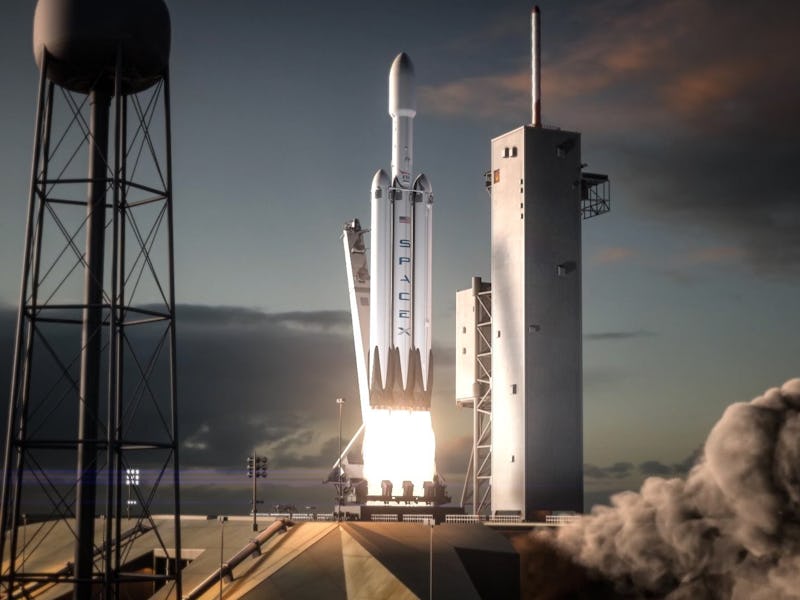The 7 Stages of SpaceX Falcon Heavy Mission Shown Breathtaking Video
How stoked are you?

On Friday, SpaceX CEO Elon Musk shared a video that illustrates just what the first Falcon Heavy rocket mission, targeted for November of this year, is expected to look like — if it defies Musk’s self-ascribed high odds of failure, of course.
If the test launch of the powerful new rocket goes off without a hitch, missions like the the one seen in the video below could soon be the norm for heavy payload trips to the moon, Mars, and beyond.
The company is also seeking to attempt an ambitious recovery of the $6 million payload fairing, the nose cone at the top of the rocket and reason for the mission. Atop that fairing may one day sit a capsule with humans in it. “Imagine we have a pallet of cash worth $6 million dollars falling through the sky,” Musk has told his staff. “Would we try to catch it? I say we do.”
A lot will happen with every SpaceX Falcon Heavy mission, which will launch what will be the world’s most powerful rocket from launchpad 39A at Kennedy Space Center in Cape Canaveral, Florida — “the former launchpad of the Apollo 11 first moon landing,” Musk noted on Instagram. “Hallowed ground.”
The rocket will be able to lift into orbit 119,000 pounds, equivalent to a 737 jet filled with passengers, crew, luggage, and fuel. (NASA’s in-development Space Launch System, when completed, will top that by carrying 154,000 pounds to orbit.)
There’s a lot that will happen with every mission, as the video shows. Here’s a quick rundown of what will be every Falcon Heavy mission:
Blast off!
Launch!
This actually isn’t as easy as it look like. Musk has previously noted that there’s a good chance the rocket doesn’t even make it to orbit. He’s really just hoping the rocket doesn’t end up inflicting a horrid amount of damage on the historic launchpad.
Three rockets split up
Boosters Separate
Once the Falcon Heavy is out of the planet’s atmosphere, the rocket’s three boosters will separate from one another. Fun fact: the two side boosters are actually Falcon 9 rockets recovered from previous vertical landings.
It's rocket science, and it's also rocket gymnastics.
Side Boosters Flip
In order to bring the boosters back to Earth, they need to slow down. Flipping them over and firing up the back boosters is enough to get those babies down a speed where they can begin to fall back to the surface.
Smooth.
Side Boosters Land on land
SpaceX has a 100 percent success rate for landing booster rockets this year. Let’s hope November keeps it that way. No drone ships here, sadly.
There goes $6 million
Fairing Separation
As Musk has mentioned before, the fairing is worth $6 million. The company is definitely going to try to recover it in one piece.
Don't forget the big one!
Central Booster Flips
Let’s not forget the main Falcon Heavy booster — the big piece that needs to be salvaged if SpaceX really wants reusable space architecture to go vogue. Same principles apply — flip the booster and fire the thrusters the help slow it down.
Here it comes!
Central Booster Lands
Finally, we bring back the big tamale to Earth and do it all over again.